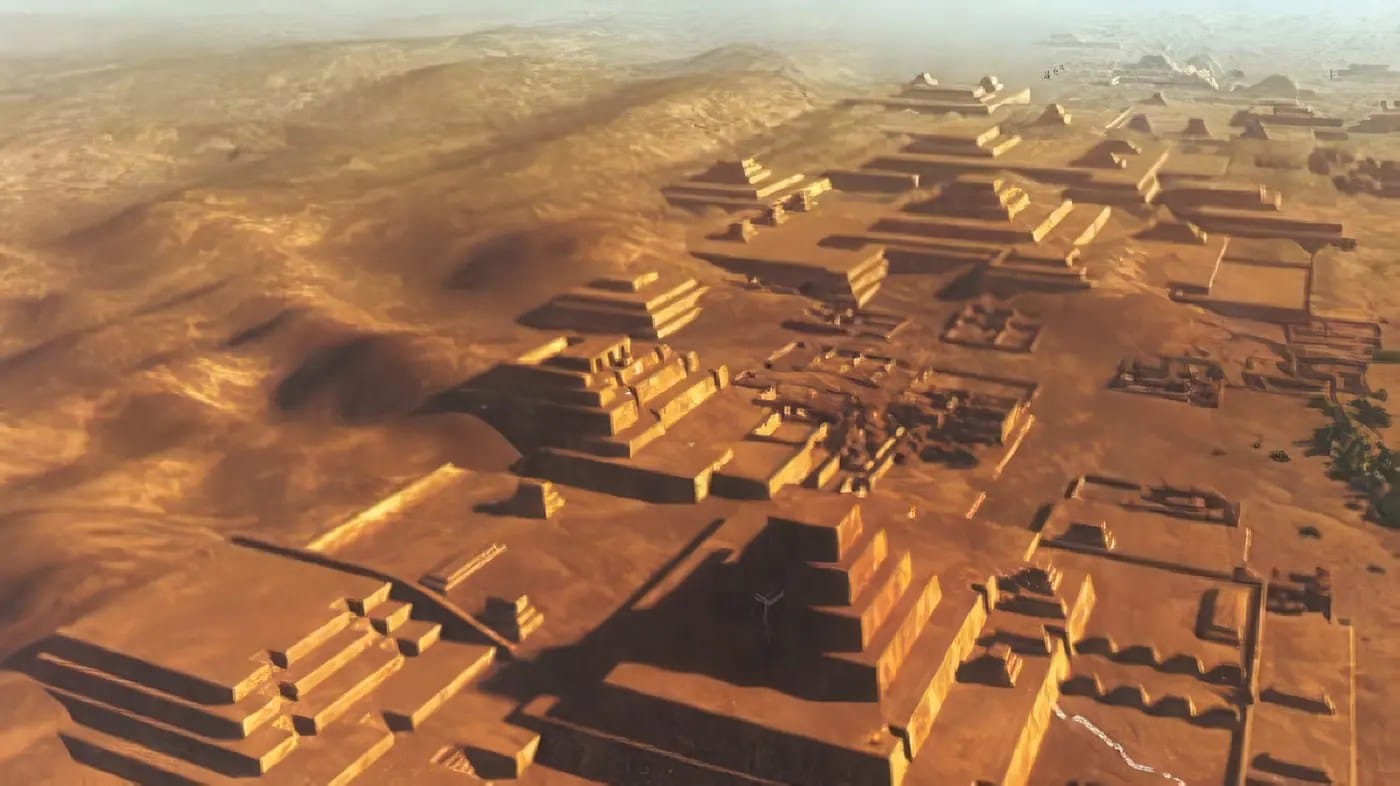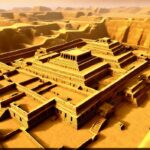The Nazca, an ancient civilization flourishing on the Peruvian coast from approximately 200 BCE to 600 CE, left behind a legacy as enigmatic as their famous Nazca Lines. Their vibrant artistry, complex social structures, and ingenious adaptation to a challenging desert environment continue to fascinate and inspire awe. This article delves into the Nazca world, exploring their history, artistry, beliefs, and the enduring mystery of their decline.
Unveiling the Nazca: Age, Artistry, and Enigmas
The Nazca civilization thrived for approximately 800 years, leaving an indelible mark on the southern coast of Peru. From roughly 200 BCE to 600 CE, they developed a complex society, innovative technologies, and a unique artistic style that continues to intrigue researchers today. This period, known as the Early Intermediate Period, saw the Nazca emerge from the earlier Topará culture, adapting and innovating to create their own distinct identity. Their legacy encompasses not only the famous Nazca Lines but also sophisticated pottery, intricate textiles, and impressive ceremonial centers like Cahuachi, suggesting a rich spiritual life and complex social structures. If you are interested to know more about an image used repeatedly in the Cherokee creation myth, follow the link.
Chronology & Location
- Time Period: 200 BCE – 600 CE (Early Intermediate Period).
- Location: Southern coast of Peru, specifically the Nazca and surrounding valleys, within the modern-day Ica Region. This includes the valleys of Chincha, Pisco, Ica, Río Grande and its tributaries (Nazca, Palpa, El Ingenio), extending south to the Acarí valley.
- Key Sites: Cahuachi (primary ceremonial center), Ventilla (urban center), Tambo Viejo, La Tinguiña, La Estaquería, Cerro Max Uhle, and the Chauchilla Cemetery.
Cultural Development & Influences
- Predecessor Culture: Strongly influenced by the Topará culture, inheriting agricultural techniques and possibly some military and territorial traditions.
- Nazca Phases:
- Protonazca (200 BCE – 100 BCE): Paracas influence evident in realistic art depictions.
- Early Nazca (100 BCE – 1 CE): Distinct Nazca artistic style develops in ceramics.
- Middle Nazca (1 CE – 450 CE): Nazca culture consolidates; deities appear in art; Cahuachi becomes a major center.
- Late Nazca (450 CE – 600 CE): Significant changes; Cahuachi abandoned; ceremonial focus shifts to La Estaquería.
Religious Beliefs
- Polytheistic: Likely worshipped a pantheon of deities, possibly including a god of rain and a sun god, reflecting the importance of water in their arid environment.
- Ritual Practices: Evidence suggests both human and animal sacrifice, probably as part of ceremonies aimed at ensuring fertility and water resources.
Nazca Lines
- Description: Giant geoglyphs (lines and figures) etched into the desert surface.
- Discovery: Attributed to Toribio Mejía Xesspe.
- Purpose: Theories include astronomical calendars, water rituals, and processional pathways. Research continues to explore their meaning.
Artistic Achievements
- Pottery: Vibrant polychrome pottery with intricate designs depicting deities, animals, plants, and complex iconography.
- Textiles: Sophisticated textiles with elaborate embroidery, demonstrating advanced weaving techniques and artistic skill.
Beyond the Lines: Mapping the True Expanse of the Nazca Civilization
The Nazca civilization’s influence extended beyond the iconic Nazca Lines, impacting a significant portion of Peru’s southern coast. From their heartland in the Ica Valley, their reach stretched north to the Chincha valleys and south to the Acarí Valley, encompassing a network of interconnected communities that likely traded goods, ideas, and cultural practices. This suggests a dynamic and far-reaching society, not just isolated settlements. The presence of Nazca-style artifacts in distant regions suggests their artistic and cultural influence spread even further through trade networks.
The Heartland: Nazca Origins & Expansion
- Origin: Ica Valley, centered around the Río Grande de Nazca.
- Timeline: Early Intermediate Period (200 BCE – 600 CE).
- Expansion: North to Chincha valleys, south to Acarí Valley (Caravelí province, Arequipa).
Beyond Borders: Evidence of Nazca Influence
- Trade Networks: Facilitated exchange of goods, ideas, and cultural practices, extending influence beyond the political heartland.
- Ceramic Diffusion: Nazca-style pottery found in distant regions suggests widespread artistic appreciation and trade connections.
- Textile Traditions: Sophisticated weaving techniques, inherited from the Paracas culture, likely influenced textile production in other areas through trade routes.
The Wari Connection
- Conquest and Fusion: The Wari Empire conquered the Nazca around the 6th century CE.
- Enduring Influence: Nazca artistic motifs and techniques persisted, integrating into Wari art.
Deciphering the Decline of the Nazca: Environmental Factors and Societal Shifts
The decline of the Nazca, beginning around 700 CE, remains a complex puzzle. While a single cause is unlikely, a combination of environmental pressures and societal changes probably contributed to their downfall. Prolonged droughts, potentially exacerbated by deforestation and unsustainable agricultural practices, could have led to devastating desertification. The recurring El Niño phenomenon, with its intense rains and flooding, would have further disrupted agriculture and infrastructure. Internal conflicts over dwindling resources and the rise of the Wari Empire likely added to the strain, eventually leading to the disintegration of Nazca society. Their decline serves as a potent example of a civilization’s vulnerability to environmental change and external pressures.
Factors Contributing to Decline
- Desertification: Prolonged droughts, potentially exacerbated by human activity, may have led to famine and societal instability.
- El Niño: Intense rainfall and flooding could have devastated infrastructure and agriculture.
- Internal Conflicts: Resource scarcity and environmental stress may have triggered internal strife and political instability.
- Rise of the Wari Empire: External pressure from the expanding Wari Empire may have weakened the Nazca, contributing to their decline.
Ongoing Research and Evolving Understandings
Research into the Nazca decline is ongoing. Scientists are using various methods, including paleoclimatology and archaeological analysis, to reconstruct past environmental conditions and understand the complex interplay of factors that led to the Nazca’s downfall. New discoveries may shed further light on this intriguing period of ancient history.
- Unlock Elemental 2 Secrets: Actionable Insights Now - April 2, 2025
- Lot’s Wife’s Name: Unveiling the Mystery of Sodom’s Fall - April 2, 2025
- Photocell Sensors: A Complete Guide for Selection and Implementation - April 2, 2025

















1 thought on “The Nazca: Antiquity, Extension, and the Enduring Legacy of a Coastal Kingdom”
Comments are closed.